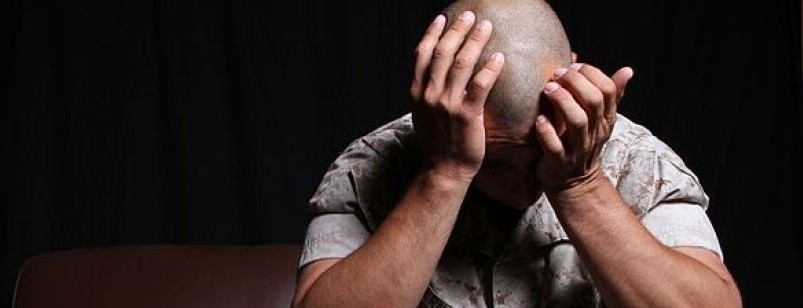
WVXU: Research aims to change effects of PTSD on brain
UC expert details cutting edge treatments at Cincinnati VA
The U.S. Department of Veterans Affairs estimates that diagnoses of post-traumatic stress disorder (PTSD) in veterans is roughly double that of the general American population.
Kate Chard, PhD, University of Cincinnati professor of psychiatry and behavioral neuroscience and director of PTSD programs at the Cincinnati VA, is conducting cutting edge research and developing new evidence-based treatments for veterans with PTSD.
"What's different about the military is we have people in the military who have the same childhood traumas as the rest of us — maybe car accidents, natural disasters — but they also can have traumas related to combat," Chard told WVXU.
Chard is leading a study analyzing blood, saliva and EEG brainwaves to find biological differences in veterans with PTSD. The Cincinnati VA also offers three main kinds of treatment: cognitive processing therapy, prolonged exposure and EMDR.
"I think the thing that makes Cincinnati really stand out is we never stop. If one treatment doesn't work for you, then let's try something else," Chard said. "We're always going to be there for you to help you address your PTSD."
Read or listen to the WVXU story.
Featured photo at top courtesy of the United States Marine Corps.
Related Stories
Make Hoxworth Blood Center’s special holiday events part of your family celebrations this December
December 12, 2025
This December, Hoxworth Blood Center, University of Cincinnati, is inviting families across Greater Cincinnati to add something truly meaningful to their holiday traditions: giving the gift of life. With festive community events, beloved local partners and special thank-you gifts for donors, Hoxworth is making it easier, and more heartwarming than ever, to roll up your sleeves and help save lives close to home.
Ohio nurses weigh in on proposed federal loan rule
December 12, 2025
Spectrum News journalist Javari Burnett spoke with UC Dean Alicia Ribar and UC nursing students Megan Romero and Nevaeh Haskins about proposed new federal student loan rules. Romero and Haskins, both seniors, were filmed in the College of Nursing’s Simulation Lab.
Bearcat Mascot, Cheer Team and scholarships help celebrate Decision Day
December 12, 2025
Cincinnati media organization provided news coverage of Decision Day activities at the University of Cincinnati on Dec. 10, 2025. Surprise announcements of the 2026 Marian Spencer Scholarship recipient occurred during the day.
